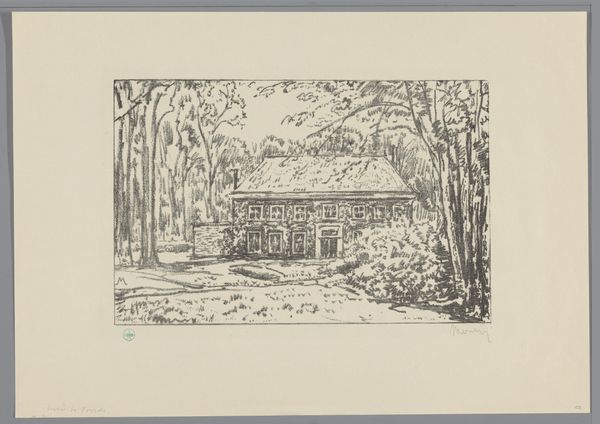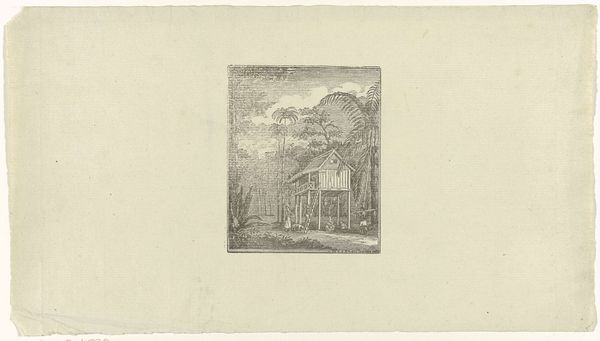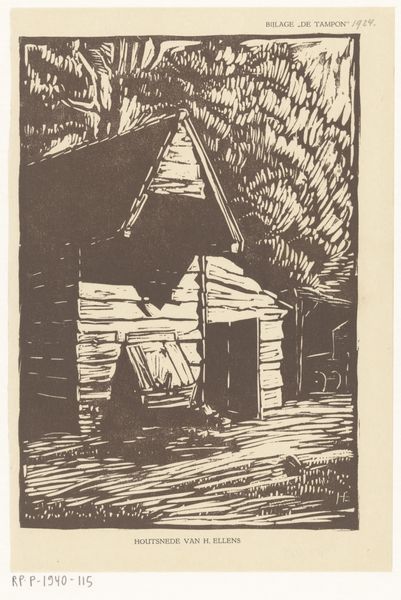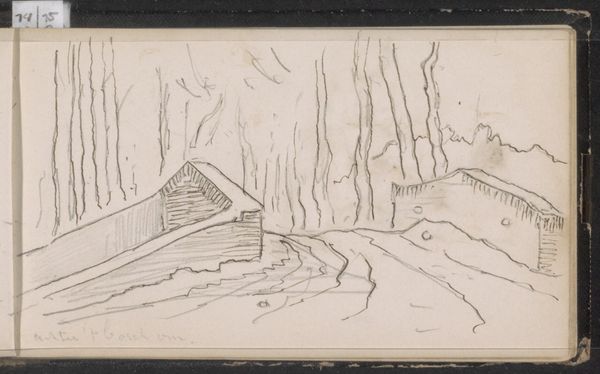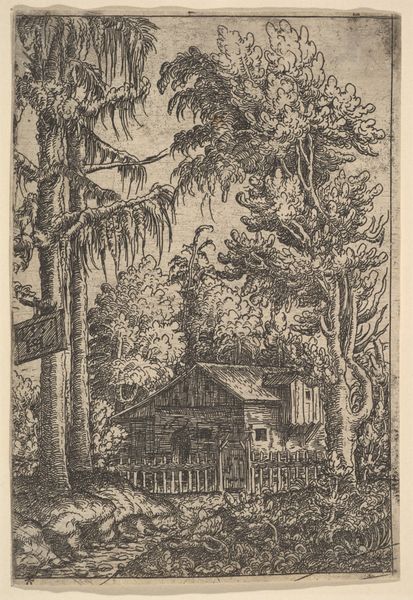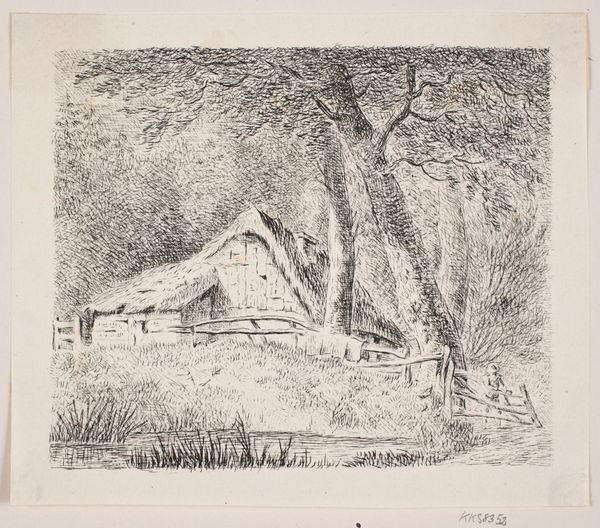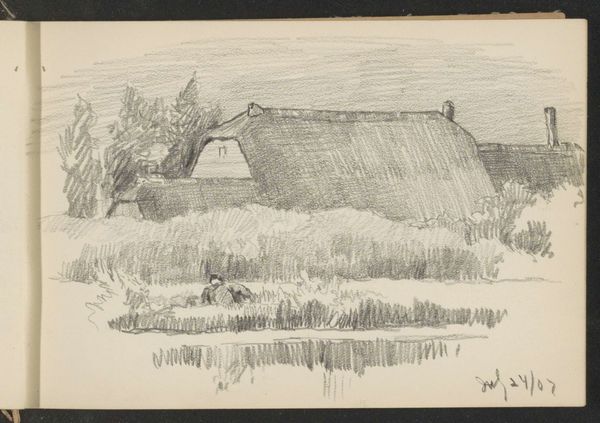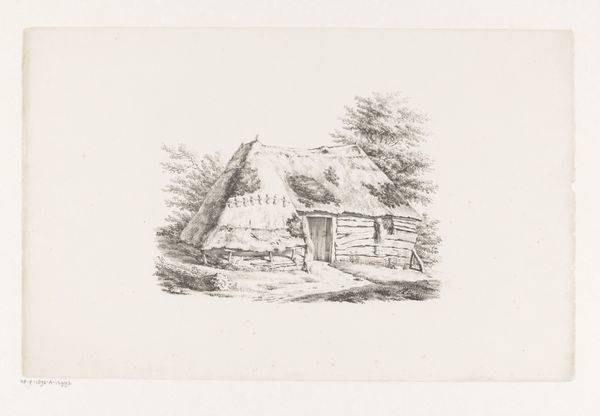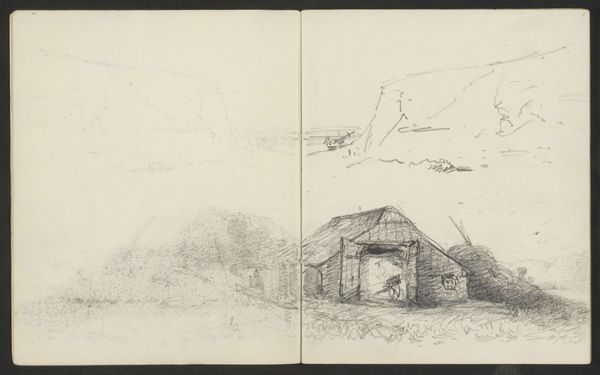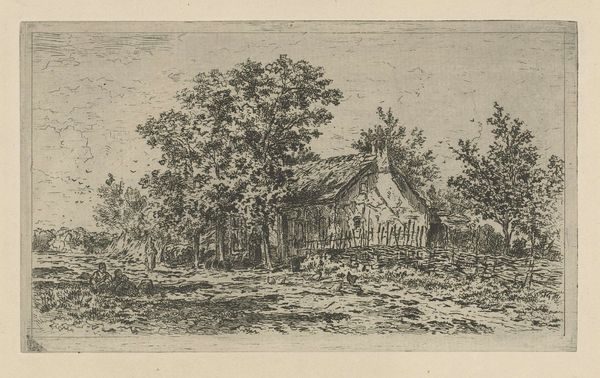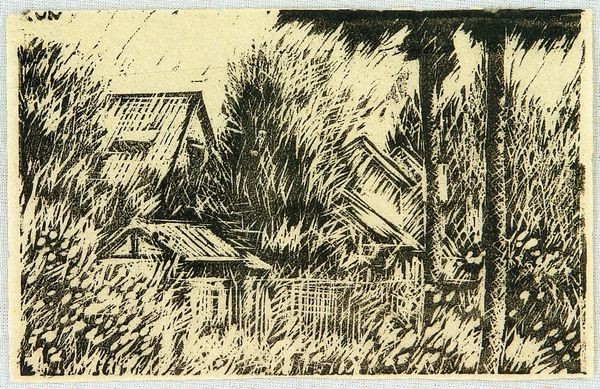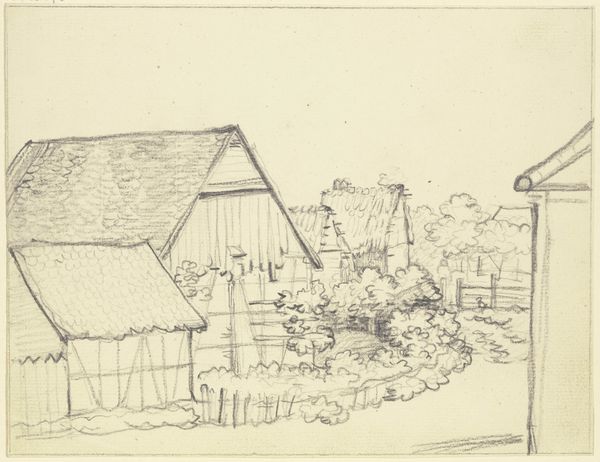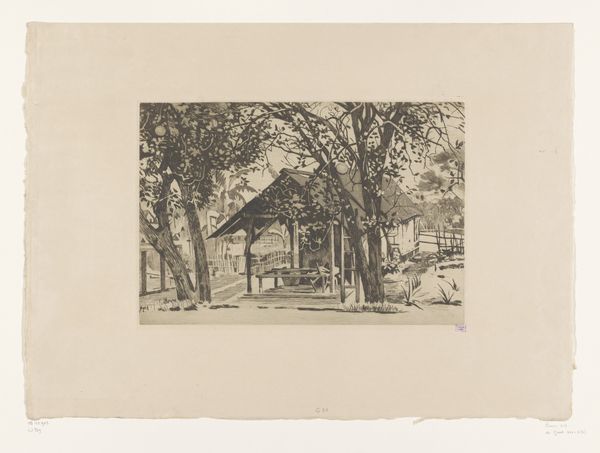
#
tree
#
quirky sketch
#
pen sketch
#
old engraving style
#
personal sketchbook
#
sketchwork
#
pen-ink sketch
#
pen work
#
sketchbook drawing
#
sketchbook art
#
initial sketch
Dimensions: height 102 mm, width 148 mm
Copyright: Rijks Museum: Open Domain
Editor: Here we have "Schuur of hut met rieten dak tussen de bomen," or "Barn or hut with thatched roof among the trees," by C. Goes, dating from around 1900 to 1940. It's a charming little sketch, quite delicate and detailed. I'm struck by the contrast between the rough texture of the thatched roof and the smoothness of the tree trunks. What stands out to you in this piece? Curator: It's the visible labor that intrigues me. The repeated pen strokes create the textures—you can almost feel the artist meticulously building up the image. The thatch, the wood, the trees, each is rendered through repetitive, almost meditative mark-making. Think of the time involved. What does this labor reveal about the perceived value of this subject, or the artist’s intention in documenting it? Editor: I hadn't considered that! It's true, you can really *see* the artist's hand in it. So, the material aspect of the ink and paper, plus the time invested in the drawing, becomes part of the work's meaning? Curator: Precisely. This work resists any clear separation between 'high art' and 'craft'. The act of drawing becomes a kind of labor, not unlike the work of constructing the actual thatched-roof hut. Notice how the materials – simple pen and ink on paper – democratize the process, making art accessible. It wasn't about expensive oils or bronze. Editor: That makes so much sense. It almost feels like the artist is elevating the everyday, the commonplace barn, through the careful application of their craft. Curator: Exactly. Consider how the depiction itself reinforces certain social structures too. The hut speaks to rural life and perhaps a simpler time, carefully hand-rendered instead of mass produced. The choice of subject reveals cultural priorities or even perhaps romanticized perspectives on labor and leisure during the turn of the century. Editor: This has really changed how I see the sketch. Now I'm not just looking at a quaint drawing of a barn, but thinking about the artistic process, the artist's labor, and the social context embedded in the materials and subject matter. Curator: And hopefully that provides a more nuanced appreciation. Sometimes, the real story is not just in what is represented, but in how it's made.
Comments
No comments
Be the first to comment and join the conversation on the ultimate creative platform.
